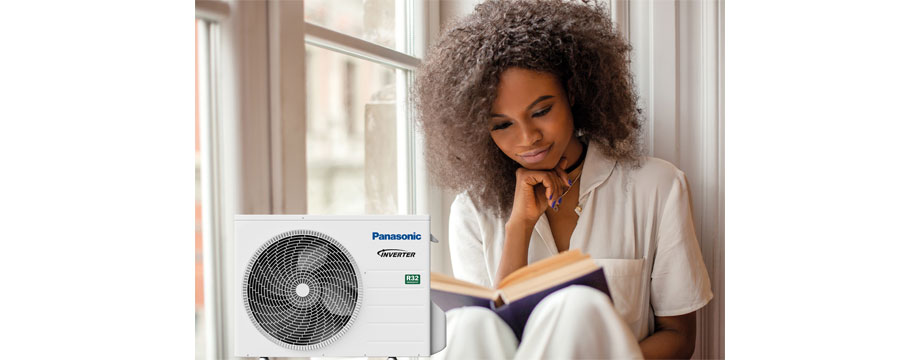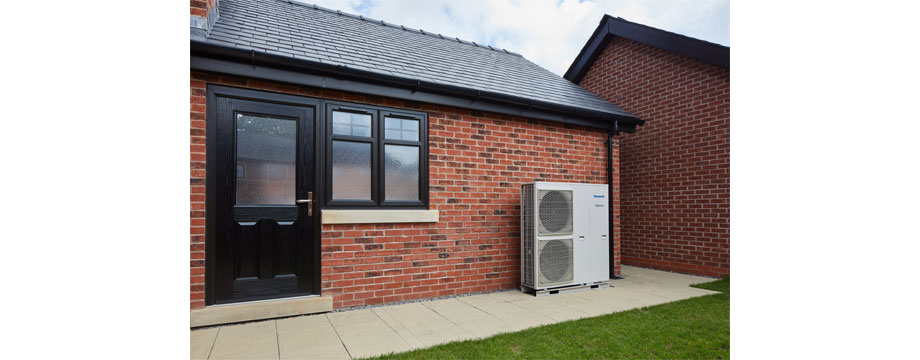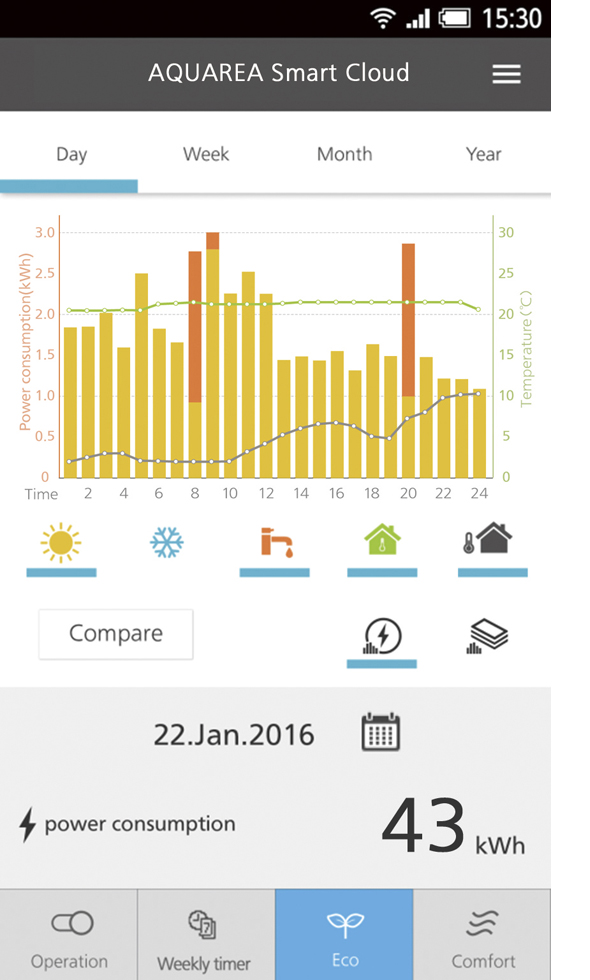With the average household in the UK emitting 2.7 tonnes of CO2 every year from heating alone, the UK Government have introduced new regulations to help reduce carbon emissions. Housebuilders and developers will need to comply with the new SAP10 regulations from 15th June 2022 for all new builds. Richard Bishop, Head of Marketing for UK and Ireland for Panasonic, explores why air to water heat pumps are the future for the housing sector and an essential step in challenging the climate change crisis.

Air source heat pumps currently available on the market are incredibly reliable, quiet in operation, and highly energy-efficient when compared to gas-fired boilers or electric heaters, providing the perfect opportunity to lower carbon emissions and play a crucial part in saving the environment. Further efficiencies can be achieved when linked to a smart controller which can help to produce significant savings for both the heating and domestic hot water (DHW) provision.
With the new SAP10 regulations coming into force from 15th June 2022, housing providers and developers will need to ensure they are fully compliant and ready to switch to more renewable heating systems for their new build projects.
Panasonic recently worked with Stroma Group, a market leader in building energy performance, sustainability, and compliance to the construction industry, to carry out some independent research and tests on how their air to water heat pumps faired with the new SAP10 BRE approved software calculation tool – the Panasonic Aquarea range of air-to-water heat pumps came out highly favourable in these tests compared to competitor units currently on the market.
Panasonic’s Aquarea range of air to water heat pump solutions uses only a small amount of electricity to turn the surrounding air into hot water to heat our homes and DMH. The new Aquarea J Generation has improved comfort in extreme conditions with temperatures as low as -20˚C. These heat pumps, together when used with its Smart Cloud and Service Cloud control and monitoring systems, provide a comprehensive and energy-efficient solution for heating and domestic hot water.
Building homes generates approximately five tonnes of CO2 per year, producing as much CO2 as someone who lives an average lifestyle does over a decade. This creates an even greater demand to make sure our homes function on low carbon and sustainable energy solutions. Switching to an air to water heat pump to provide heating to our homes, such as the Panasonic Aquarea J Generation with R32 refrigerants, means housing emissions can be lowered significantly and residents can save on their fuel bills. Air to water heat pumps are the future for the housing sector, and an essential step in challenging the climate change crisis we face today.

Heat pumps can be connected to existing radiators, as well as underfloor and fan-assisted radiators, to deliver heating in the winter; plus, an option to have dedicated cooling can also be provided during the summer months if required from the units.
Panasonic is currently working with several social housing providers across the UK and Ireland; including providers such as West Highland Housing Association in Albourne where approx. 80 Panasonic air source heat pumps have already been installed this year with a further 60 being installed over the next six months to the existing housing stock.
Panasonic has a wide range of air source heat pumps to suit different property types, spanning from one-bedroom apartments to six-bedroom detached properties and all those in between. To help simplify the choice of selecting the right heat pump size and type for each project, Panasonic has recently introduced its Aquarea Designer, the online tool to help heating designers, architects, design offices, installers, and distributors alike. The newly developed air-to-water design tool is optimised to help professionals easily identify the most appropriate Aquarea air-to-water heat pump for a particular application, calculate the savings compared to other heat sources, and calculate CO2 emissions swiftly.
Panasonic’s bespoke program helps to promptly design and size an Aquarea heat pump system, allowing users to identify the correct application for them at the simple click of a button. Users can compare investment and operational costs compared to other heat sources available, whilst promptly calculating their savings and CO2 emissions. The system can produce a Heat Pump Design Report which includes product web links for heat pumps and DHW tanks and can be individually selected to include the following information: operational costs, investment costs, detailed product information, and ErP label.
The Panasonic Aquarea Designer will calculate the project's energy costs in terms of domestic hot water and the heating and cooling demand. It will furthermore show the total heat consumption by operation mode and the calculated SCOP (Seasonal Coefficient of Performance). It then allows the designer to show clients a comparison with other equipment options such as heating by conventional gas-fired boilers, oil fuel systems, pellets, and standard electric heating.
Aquarea A2W Heat Pumps are proving popular with housing associations and developers looking to provide highly efficient heating and hot water, whilst also providing homeowners with a reliable system offering long-term energy savings. Andy Denton, Director of Marshgate Properties, commented “Selecting sustainable energy options is high on our list of important aspects for the homes we build. We had already installed Panasonic Aquarea Heat Pumps on a previous project a year earlier and have been impressed with the units and their performance.”
 Heat pumps when coupled with the use of smart controls, such as the Panasonic Smart Cloud and Service Cloud, can now also remotely monitor the suction and discharge pressure of a unit to help reduce system downtime, thus ensuring that a heating and hot water system suits individual daily needs.
Heat pumps when coupled with the use of smart controls, such as the Panasonic Smart Cloud and Service Cloud, can now also remotely monitor the suction and discharge pressure of a unit to help reduce system downtime, thus ensuring that a heating and hot water system suits individual daily needs.
The Panasonic Smart Cloud and Panasonic Service Cloud has been introduced to the industry to enable direct communication between heat pump units and controllers. This integration allows building owners and portfolio managers to view all their heating and cooling units anytime from anywhere via a single interface and can be used on mobile devices such as tablets or smartphones. It delivers actionable real-time insights to help reduce energy consumption and drive savings.
In conclusion, Panasonic is hugely passionate about the environment, and we believe we can help the UK housing sector meet its low carbon targets through supporting and advising social housing providers and developers. Switching technologies from traditional systems powered by mains gas, oil or LPG to an air source heat pump, such as the Panasonic Aquarea Range, can deliver significant cost savings and improvements to heating performance, all whilst maintaining a low sound level.
For more information on the Panasonic range of low carbon solutions, or if you need some help or advise with a project, please visit www.aircon.panasonic.eu/GB_en.
- Log in to post comments













